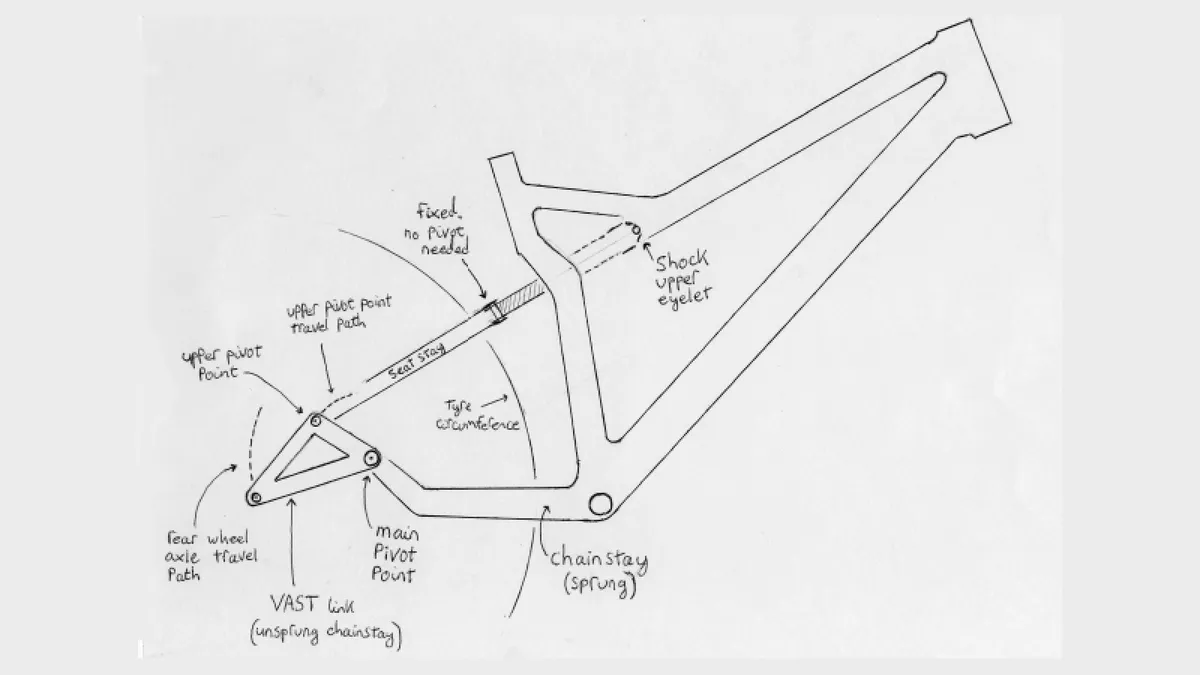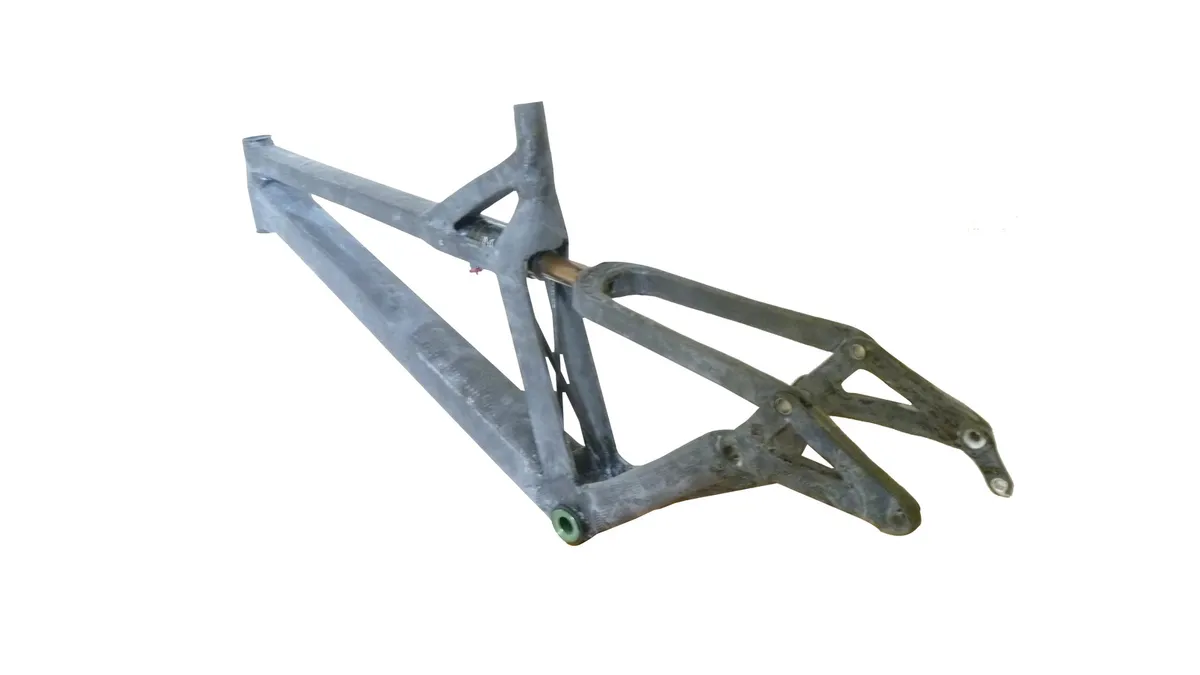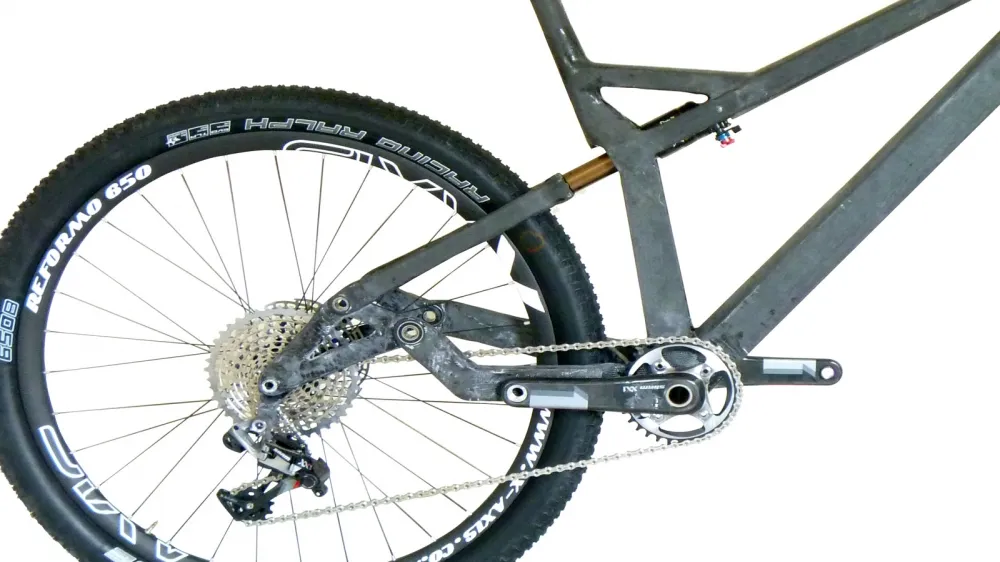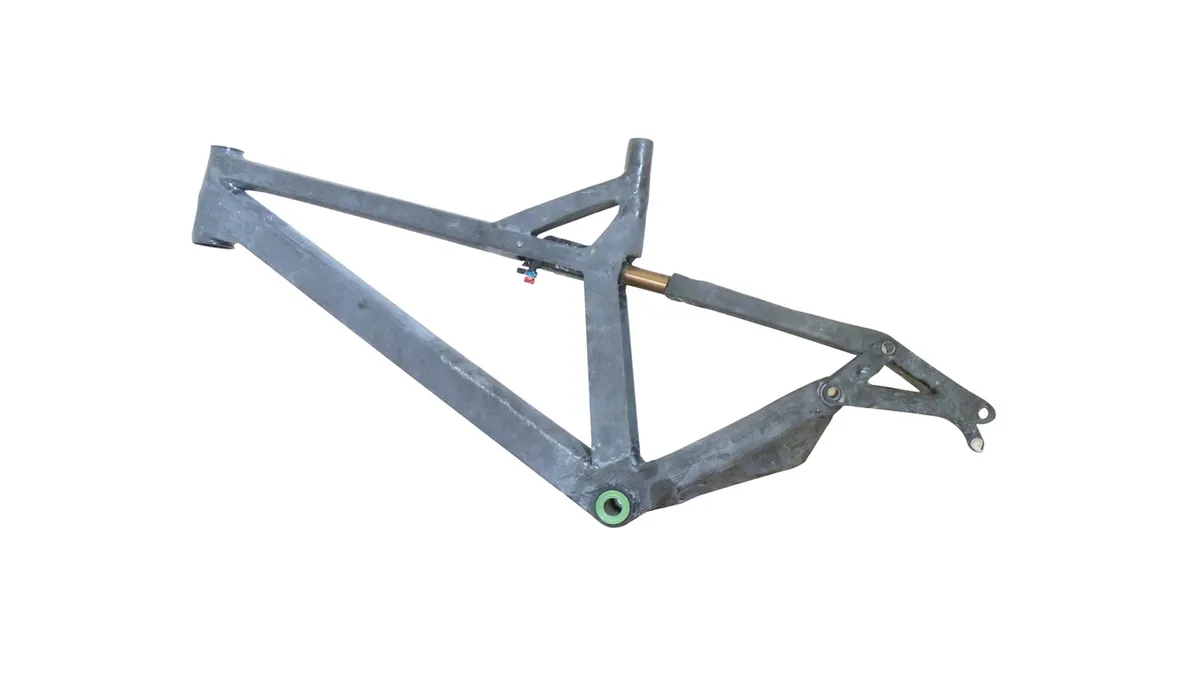It’s not often we get a glimpse at a design while it's still in initial prototype form, but that’s exactly what we have with the VAST Link suspension system. This novel mountain bike rear suspension design is currently in its concept phase and will likely remain that way until it is either bought or licensed.
The VAST Link allows the rear end to pivot from a main pivot located near the back of a rigid chainstay. This pivot layout comes with a host of claimed benefits including a rearward and upward axle path, improved shock stroke leverage ratio, increased lateral stiffness, reduced unsprung weight, reduced frame weight and lower manufacturing costs.

A basic drawing of the design makes sense of what's going on
Part of the inspiration for the design was to achieve a similar rear wheel axle path to successful systems such as the DW-Link, but with less complexity and pivot points.
There is certainly merit to the design. We’re dubious of some claims, however, including the reduced frame weight and increased lateral stiffness. With little holding the seatstays in plane beyond the rear shock, we suspect plenty of reinforcement (weight) will be required at the chainstay-mounted main pivot to counter lateral movement. We also foresee chain growth having a large impact on the viability of this design.
Behind the VAST Link design is Tim Southall, a 33-year-old South Australian with a long history in riding and a self-proclaimed 'backyarder' when it comes to design. Doing carbon bike repairs part-time when home from working overseas in the tourism industry, he started to look into suspension system improvements. Over the past two years, Southall has put together this still-unfinished prototype with 118mm of rear wheel travel in order to test his unique suspension design.
Unlike the majority of the industry – which uses 3D modelling to test early phases of design – Southall built a working model to test common fitment issues. Since starting the prototype, he admits to have underestimated the extreme difficulty in building such a prototype – especially without the use of heavy-duty jigs and similar.
Being in Australia, Southall says that on a small scale, getting items such as high-modulus carbon sheets and pivot hardware is near impossible. So for the moment, the prototype remains a concept and not something he's has been able to ride.

Plenty of time has been invested into this proof of concept prototype – it's handmade without question…
“To confirm that the design worked, the bike had to be built to test for chain clearance on the sprung chainstay and crank and heel clearance at all points of suspension travel in every gear – everything else could be tested in 2D modelling.” Southall said. “Luckily it all worked out and everything fits the way it should.”
“The fine tuning of the design which will require multiple prototypes to be built and tested is beyond my budget [so] I’m looking to sell or license the design to an existing or start-up company that has expertise in that area,” Southall continued. “Many subtle adjustments will need to be made to discover the optimum pivot placements – but as a starting point, this is the best platform by far.”
Either way, we applaud the ingenuity in attempting something so technical. Let us know what you think of the VAST Link!

